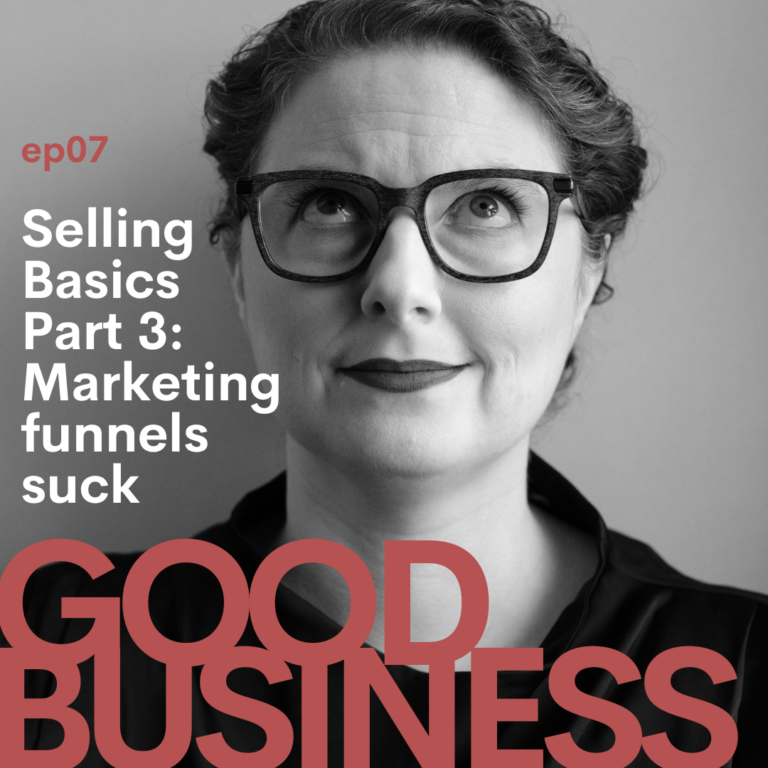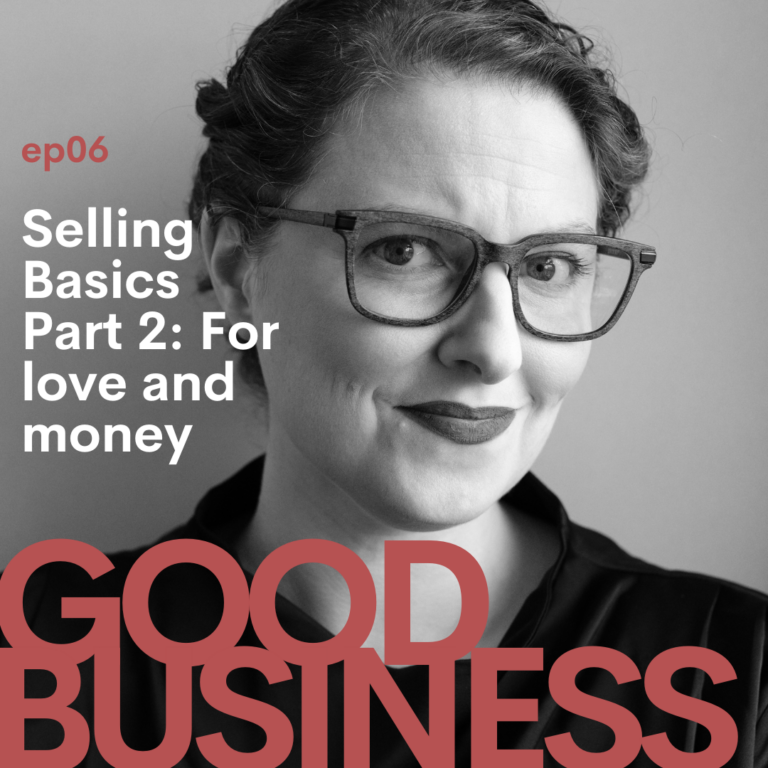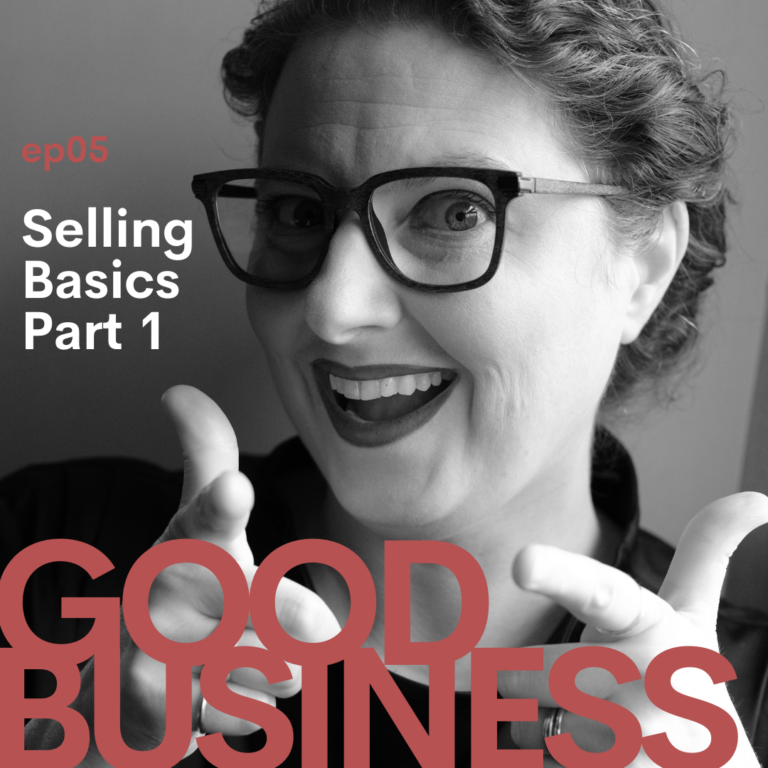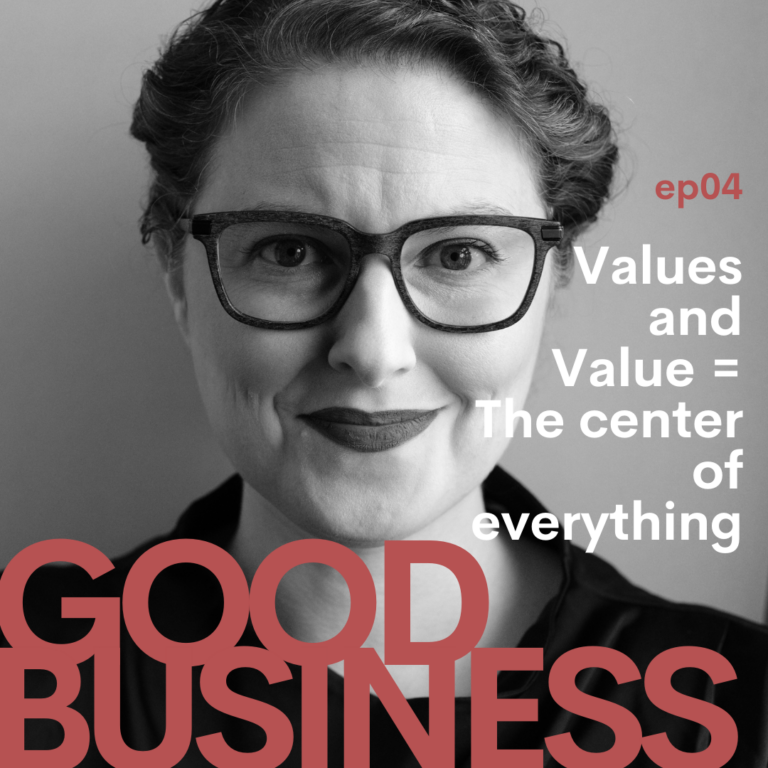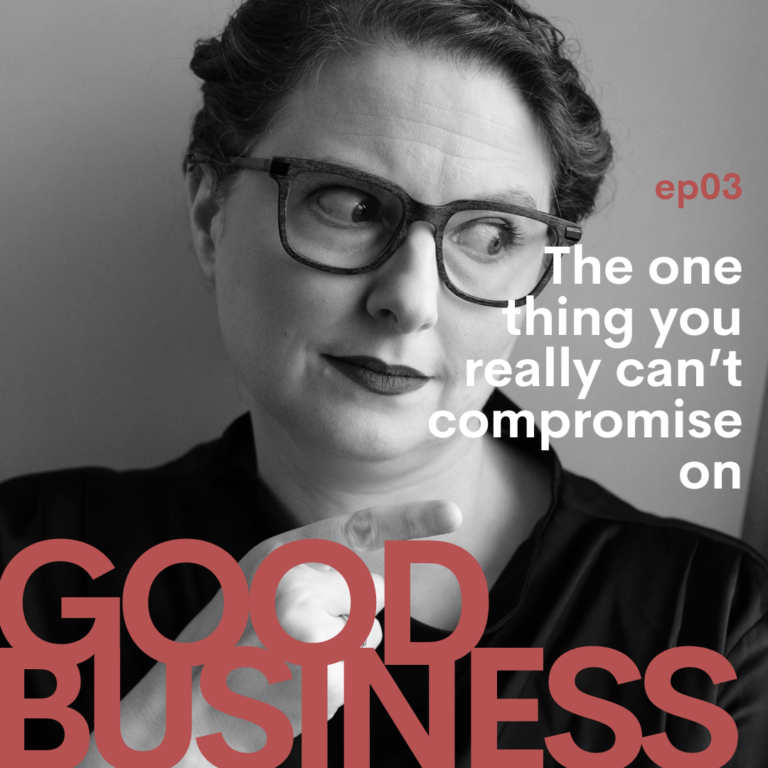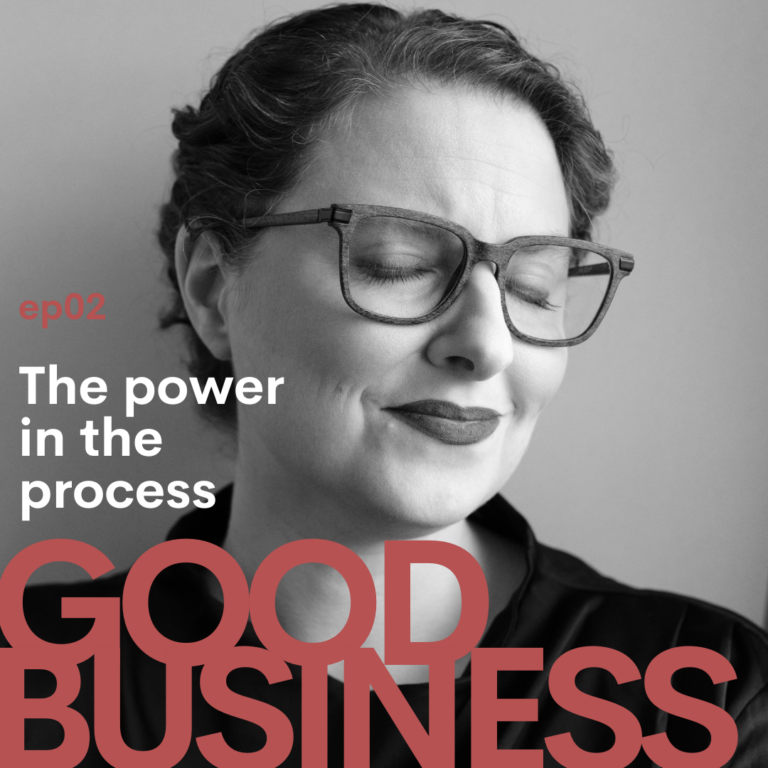Today’s episode is the third in our series on offer design. Let’s talk about delivery!
In this episode we talk about how when you have a client who objects to your format, delivering can get difficult. When you’re designing an offer, make sure that you’re delivering in the ways in which you can keep your promises.
Episode Transcript:
Welcome back to The Good Business Podcast. I’m your host, Illana Burk. And today, welcome to part three of the offer design series. Today we are talking about delivering your services on your terms. This is one of those sticky ones that is born out of the common objections, especially by those who do creative work.
When I’m working with new clients, and often I work with people who are creative types — they might be healers, they might be designers, they might be artists — they fall into the category of this work. This work that I make my living off of is really deeply tied to my heart and my soul. That’s a significant portion of the people I’ve worked with over the years, but not exclusive to that.
This all applies, whether you’re creating an offer for corporate consulting or jewelry design, right?
What we’re talking about today is that when you have a client who objects to your format, delivering can get difficult. And when you’re designing an offer, making sure that you’re delivering in the ways in which you can keep your promises, as we’ve discussed in past episodes, is everything. commonly I get the complaint that I can’t do X because my clients won’t buy in. Things like, yesterday I was discussing with the client the use of a voice messaging system. Using Voxer is an example. For those of you aren’t familiar, Voxer is basically chatroom meets voicemail. It allows you to leave long form voice memos to the recipient, and you can play them back at double, triple, quad speed.
So it can be a really efficient way, especially for coaches and creative types to communicate with their clients in between sessions. This is really, really common in the coaching world these days. And it’s a really nice way to communicate. I utilize Voxer with my one-on-one clients and it was a hard sell for me as a practitioner. And it was a hard sell for some of my clients. Mostly because it was foreign.
We have a change bias as humans. We don’t really love new things. But, when you’re creating something, and you want to be known for creating something and you want your work to be leadership-based, whatever that means for you, how you deliver what you deliver is just as important as what you deliver. The method in which you deliver on your promises is just as important as what it is you’re delivering. If you have an audience that is really accustomed to using video calls, for example, then the industry standard is Zoom. You’re probably gonna need to use Zoom in order to communicate with your people.
But that’s not always true. There are ways in which you can ask more of your people because you can make a case for better delivery. My client yesterday was mentioning that she really didn’t think her people –she’s designing a new coaching program– she didn’t think her people would use Voxer because they’re not the type of people who are going to want to have yet another app on their phone. They’re not the type of people who are going to want to engage with technology in yet another way. And she was sort of lamenting that and going “I’d really, I wish there was just a bit, a better way I could do in-person work.” Well, based on a whole bunch of factors, right? The fact that she needs flexibility to work from home, there’s health issues at play, there’s a need for working around a spouse’s schedule at home, there’s a lot of things pressing in on her ability to deliver in very specific ways. It became a conversation about priorities.
There are ways in which you will have to deliver your work in order to make your bigger goals fit. If you will allow your delivery systems to be your barriers, then you don’t make room for the bigger choices and the bigger sacrifices and the bigger things that are more important to your delivery than simply asking your people to use a new technology platform.
When I started using Voxer, I used to give people an option. I would tell them they could use email they could use WhatsApp, they could use Voxer, whatever they wanted. I just asked that they picked one and stuck with it.
What that turned into was I was running all over the place on a bunch of different platforms and balls were getting dropped. I wasn’t able to keep it all straight. I wasn’t able to keep track of who was communicating with me, where. I’m not going to limit myself to just one medium that only has one learning style in mind. Like for one-on-one clients, some people are very verbal processors. Some are video processors, some are they’re written processors. Does that kind of touches the big ones? I can’t really do a lot for the tactile kinesthetic ones via the internet, but try. What I found was Voxer ticked the most boxes. People can type out their communication to me. They can verbally process their communication to me. They could record a video and upload it if they wanted to.
But what it also allowed was I can compartmentalize my client communication and I can handle it more efficiently. So instead of having to check five places, which, I would usually remember. To check for, I could just check one. And my clients came to be able to predict when I would check their messages and get back to them.
This created a far better client experience and a far better practitioner experience, which freed up my time and energy to focus on other things and giving my present clients the very best of me.
Let’s say you are back to our jewelry designer example. If you are finding that most people are shopping on Etsy, but Etsy is taking way too big of a bite of your profits, that doesn’t mean that you have to sell on Etsy. That means that you have a harder road ahead to redefine your delivery system based on other platforms, because you don’t have Etsy doing the heavy lifting of putting your stuff in front of a broad audience.
With each delivery system choice, you are also then choosing the consequences of that choice. So when you create an offer, you have to think through, what are my priorities and what am I willing to live with? You might choose to use something like Etsy because it creates a delivery system that has the least amount of friction for your buyers.
It’s also the simplest to get started on and requires the least amount of marketing from you in order to get your stuff up and available. Not saying it’s going to magically get people in your door. But it has the least number of steps to just get started and at least tell your family and friends that you have something available.
If, however, you are far more sensitive to the price point and to the fees that Etsy is asking of you, then you’re going to have to pay a higher cost in your marketing costs. You’re going to have to spend more time on Instagram, marketing your stuff. You’re going to have to get good at other components of marketing to offset that low barrier to entry in high fees. What you ask of your people though, the delivery system, it has to be considered first and foremost.
Back to my client that I had yesterday. I coached her through the need for helping her clients understand the value of Voxer. Because if people can understand the value, they’ll usually get on board. The way that I sell it to people is I explain that. Hey. Technology is not inherently bad. It’s what makes connection possible. Downloading a new technology to your phone spending 15 minutes learning it is not an inherently negative thing. It doesn’t put you online anymore than you were before. It’s simply offering us a convenient and simple way that we can communicate. In a way that allows me the practitioner to do my best work for you.
If you want to be able to communicate with me between calls, Voxer is my preferred method. If you have some physical, emotional, or mental ability that stops you from making Voxer comfortable for yourself, please let me know. And I’m all ears. If there’s some limitation that I’m unaware of, let me know.
But if this is a matter of preference, I’m going to ask you to challenge yourself a little bit, to make this easier for both of us. Because this is a partnership. And that’s the kicker, right? The customer is not always right. The client is not always right. They are coming to you with the simple belief that you know at least 1% more than they do.
Which requires of you to carry that weight. It requires of you to put the things in front of them that will help them make progress and help you keep your promises. Bending to a client’s desires is not always the thing that’s going to serve them. It’s not always the thing that’s going to help you keep your promises. Sometimes it can be the very thing that prevents you from doing so.
All right. Everybody hope you enjoyed this episode. On our next episode in the offer creation series, we are going to talk about how to know what done looks like. How do you know when your clients are finished working with you and when it’s time to say goodbye.
All right, everyone. Talk to you soon. Bye.
More Episodes
The Ethical Selling Part 3: Marketing Funnels Suck | GB07
Marketing Funnels. What they are (and aren’t). Why I think they’re a terrible way to structure a client relationship. And what to do instead. The idea today is to show you why and how to look deeper at the prevalent logic that you HAVE to do this to be successful. You don’t.
Selling Basics Part 2: For love and money | GB06
Today’s focus is on how to love selling by loving your clients (or potential clients) first. Loving the people you’re selling to is a HUGE part of making selling into something you adore. It’s not just an esoteric concept. It’s...
Selling the right way: Part 1 | GB05
Selling is a conversation. A communication. It’s how you show yourself to your community. The confusion happens when we see people we like, look up to, and respect using sales tactics that belie their stated mission.
Values and Value: The Center of EVERYTHING | GB04
Your values affect your your deepest work, how you make decisions, how you operate externally from yourself. It’s how you move through the world. Your value is how other’s experience it. Today’s episode is a deep-dive primer on why understanding both is critical.
The one thing to never compromise on | GB03
Business is FULL of opportunities for compromise. Options. Bad advice. The kind that tells you it’s OK to sacrifice your values. And as business owners, we are often asked to bend, shift, stretch. Change what we KNOW to be true to fit “The Rules”. Today we explore the one thing to NEVER do this on.
The Power in The Process | GB02
Process goes WAY beyond systems setup. Today, we talk about how identifying the ways in which your process is slowing your growth can be one of the most valuable exercises you can do to thrive and grow.

